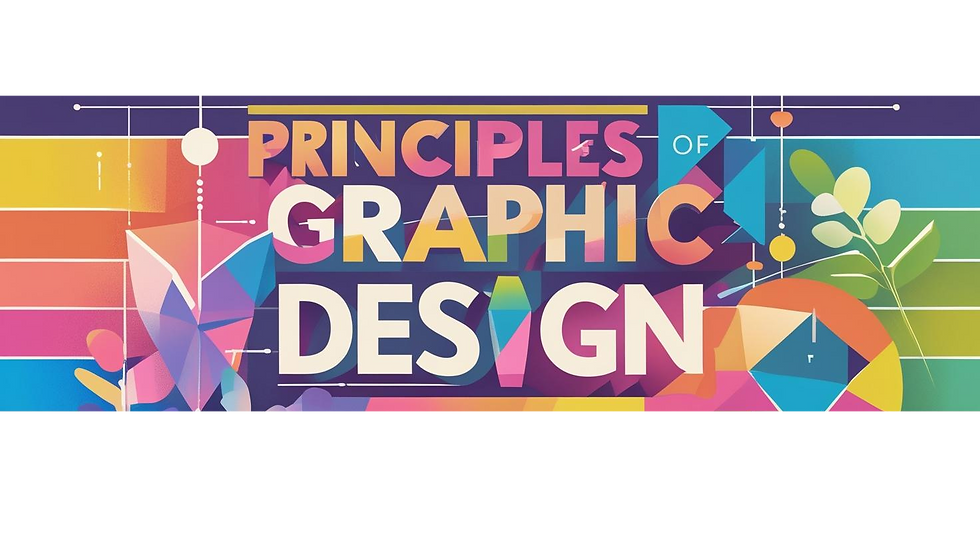Choosing the Perfect Color Palette to Reflect Your Brand’s Personality and Captivate Your Audience
- Alexandra Ortasse
- Jul 13
- 4 min read
In today's bustling market, your brand's color palette is more than just a pretty decoration. It is a powerful visual tool that communicates your brand’s identity and connects emotionally with your audience. Colors can attract potential customers, spark feelings, and differentiate you from competitors. This guide will help you pick a color palette that showcases your brand’s unique personality while engaging your target audience.
Understanding Color Psychology
Color psychology examines how colors influence perceptions and behaviors. Each color carries specific meanings that can trigger certain responses from your audience. For example:
Red: Often linked to passion and energy, red can stimulate a sense of urgency in consumers. Think of brands like Coca-Cola, which uses red to invoke excitement and action.
Blue: This color symbolizes trust and calm. Many financial institutions, such as American Express and Chase, use blue to foster a sense of security among their customers.
Green: Known for its association with nature and growth, green is popular among environmental and health-focused brands like Whole Foods, appealing to a demographic that values sustainability.
By grasping these associations, you can select colors that effectively communicate the right messages about your brand.
Defining Your Brand’s Personality
Before choosing colors, it's vital to define your brand's identity. Are you playful, sophisticated, eco-conscious, or adventurous? A well-drafted brand personality acts as a guide in selecting colors that reflect your values and mission.
Ask yourself these questions:
What core values define your brand?
What emotions should you evoke in your target audience?
How do you want your audience to perceive your brand compared to competitors?
Answering these questions will aid in curating a color palette that resonates with your brand's essence.
Analyzing Your Target Audience
Understanding your audience is crucial in selecting a compelling color palette. Factors like demographics, preferences, and cultural backgrounds can majorly influence color perception.
Market research can yield important insights. For instance:
Age Group: According to a study by Color Communications, 76% of consumers claim that color influences their shopping decisions. Younger audiences are often attracted to bold, vibrant colors, while older demographics tend to prefer more subdued tones.
Gender: Research reveals distinct preferences; women generally prefer softer hues like pastels, while men often gravitate towards stronger, more saturated colors.
Cultural Connotations: Color meanings can vary greatly depending on cultural context. For example, while white symbolizes purity in Western cultures, it is associated with mourning in some Eastern cultures.
Considering these factors ensures your color palette appeals to your ideal customers.
Selecting Your Color Palette
After defining your brand’s personality and understanding your audience, it’s time to choose your color palette. A well-considered palette typically includes:
Primary Color: This is the main color representing your brand. For instance, the vibrant red of Target's logo is instantly recognizable and evokes feelings of energy and excitement.
Secondary Colors: These supporting colors enhance and complement the primary color to convey your message effectively.
Accent Color(s): Use additional colors to highlight specific elements, such as calls to action. For example, many brands employ a high-contrast color to draw attention to buttons on their websites.
Aim to limit your palette to three to five colors to ensure clarity and cohesiveness. Overusing colors can lead to visual chaos and dilute your brand identity.
Using Color Harmonies
Color harmonies are relationships between colors that create visual appeal. Common types include:
Complementary: Colors that are opposite each other on the color wheel (e.g., blue and orange) create high contrast and excitement. Sports teams often use these combinations to energize their branding.
Analogous: Colors that sit next to each other on the color wheel (e.g., blue, blue-green, and green) create a calming and harmonious effect, which can be seen in wellness brands.
Triadic: A set of three colors evenly spaced on the color wheel (e.g., red, blue, and yellow) creates a vibrant and playful palette, used by many toy brands.
Leverage these color harmonies to create a visually appealing palette that communicates the right message.
Testing Your Color Palette
Testing your selected palette across various applications is essential. Assess how the colors appear in different settings—on your logo, website, packaging, and promotional materials.
Gather feedback from members of your target audience to see if the colors resonate with them. An A/B test can help you analyze consumer engagement and conversion rates linked to different color schemes. More than 60% of consumers will choose to engage with content that utilizes appealing colors. This data can guide adjustments to your palette if needed.
Consistency is Key
Maintaining consistency in your color usage is vital for brand recognition. Ensure your chosen colors are applied uniformly across all marketing channels. This includes your website, social media, and marketing materials. A cohesive approach reinforces your brand identity and builds trust.
It is also wise to create a style guide listing the specific color codes (RGB, HEX, CMYK). This will keep your team aligned on color usage guidelines.

Wrapping It Up
Choosing the right color palette is a crucial step in forging a brand that connects with your audience. By understanding color psychology, defining your brand personality, and analyzing your target demographic, you can make informed decisions that reflect your brand's essence.
Additionally, utilizing color harmonies and maintaining consistent usage will enhance your brand recognition, setting you up for success in a competitive market. Remember, the colors you select can capture attention and create meaningful emotional connections, ultimately cultivating loyalty and success for your brand.



Comments